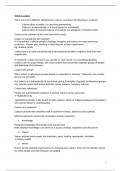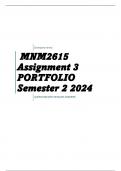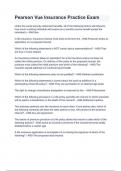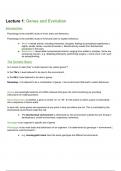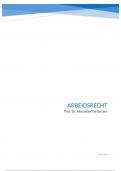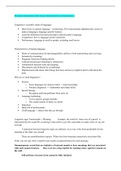Market Assessment Readings
R1: Models and Managers: The Concept of a Decision Calculus
1.1 Abstract
A model of operation can assist managers, but it has to meet requirements: The model should
be simple, robust, easy to control, adaptive, as complete as possible, and easy to
communicate with.
Simple: Easy to understand
Robust: Hard to get absurd answers from
Easy to control: User knows what input data would be required to produce desired outcomes
Adaptive: Model can be adjusted as new information as acquired
Completeness: Important phenomena will be included even if they require judgmental
estimates of their effect
Easy to communicate: Manager can quickly and easily change inputs and obtain and
understand the outputs.
Such a model consists of a set of numerical procedures for processing data and judgments to
assist managerial decision making and so will be called a decision calculus.
1.2 Conclusion
The biggest bottleneck in the managerial use of models is not their development but getting
them used. As much as possible: the models should become the property of the manager (not
the technical people). The model has to meet the above mentioned requirements.
One of the most evident consequences of the experience to date has been that a model is a
stone in the shoe for better data. Under present planning procedures many measurement
problems are glossed over or suppressed. The model forces explicit consideration of every
factor it contains and so pinpoints data needs.
R2: Database Models and Managerial Intuition: 50% Model + 50%
Manager
2.1 Abstract
We focus on ways of combining simple database models with managerial intuition. We
present a model and a method for isolating managerial intuition. For five different business
forecasting situations, our results indicate that a combination of model and manager always
outperforms either of these decision inputs in isolation, an average R2 increase of 0.09 (16%)
above the best single decision input in cross-validated model analyses.
2.2 Conclusion
In two forecasting situations where managers made real-time forecasts, we found that
statistical models and managerial judgment achieve about the same level of predictive
accuracy. We also found that a combination of model + manager outperformed either
decision input in isolation. Models and managers have complementary skills.
, Models:
• Combine complex data in a consistent and unbiased manner.
• Are inflexible, making them less accurate as environments change.
Managers:
• Have additional insight that the model cannot incorporate, such as the state of the
economy, fashion trends, idiosyncratic features of an item, and shifting redemption
patterns.
• Managers may pick up a “broken leg” cue, so rare, that it would never be anticipated by
a model.
• May tend to be too adaptive and overreact to current development.
• Limits to human information processing capacity + explosion of new data sources:
managers need to move away from intuition as sole basis of decision making.
The trick is to incorporate model consistency and managerial insight into one forecast.
Model-manager combinations can increase adaptivity while placing a regressive, but needed,
upper bound to that adaptivity. Thus, model and manager may stabilize each other.
50% Model + 50% Manager decision heuristic (nonoptimal but pragmatic solution) offers
three key advantages:
a) Simplicity – managers do not need to understand or develop models, so the natural
organizational separation of modelers and managers can continue
b) Palatability – Managers retain a considerable amount of control over the decision
making process
c) Accuracy – A combination of model + manager will be more accurate than the
individual decision inputs.
Questions you need to be able to answer:
1. What are the main strengths and weaknesses of predictions by managers versus
models?
Models are unbiased and consistent, even with combining complex data. They are
inflexible, which makes it a bit unreliable when environment changes.
Managers have additional insight that models cannot incorporate. They may pick up
on a “broken leg cue”. Their weaknesses are that they tend to be too adaptive and
overreact to current development and there is a limit to human information
processing.
2. What is a broken leg cue?
Sometimes there is a unique situation, then experts have unique information that a
model does not have. For instance, when COVID broke out, the shops were closed.
That was crucial information for forecasting sales that experts/managers did know
and models didn’t know and that made their predictions inaccurate.
3. Who makes best predictions: models or managers?
The combination of models and managers makes the best decisions.
R1: Models and Managers: The Concept of a Decision Calculus
1.1 Abstract
A model of operation can assist managers, but it has to meet requirements: The model should
be simple, robust, easy to control, adaptive, as complete as possible, and easy to
communicate with.
Simple: Easy to understand
Robust: Hard to get absurd answers from
Easy to control: User knows what input data would be required to produce desired outcomes
Adaptive: Model can be adjusted as new information as acquired
Completeness: Important phenomena will be included even if they require judgmental
estimates of their effect
Easy to communicate: Manager can quickly and easily change inputs and obtain and
understand the outputs.
Such a model consists of a set of numerical procedures for processing data and judgments to
assist managerial decision making and so will be called a decision calculus.
1.2 Conclusion
The biggest bottleneck in the managerial use of models is not their development but getting
them used. As much as possible: the models should become the property of the manager (not
the technical people). The model has to meet the above mentioned requirements.
One of the most evident consequences of the experience to date has been that a model is a
stone in the shoe for better data. Under present planning procedures many measurement
problems are glossed over or suppressed. The model forces explicit consideration of every
factor it contains and so pinpoints data needs.
R2: Database Models and Managerial Intuition: 50% Model + 50%
Manager
2.1 Abstract
We focus on ways of combining simple database models with managerial intuition. We
present a model and a method for isolating managerial intuition. For five different business
forecasting situations, our results indicate that a combination of model and manager always
outperforms either of these decision inputs in isolation, an average R2 increase of 0.09 (16%)
above the best single decision input in cross-validated model analyses.
2.2 Conclusion
In two forecasting situations where managers made real-time forecasts, we found that
statistical models and managerial judgment achieve about the same level of predictive
accuracy. We also found that a combination of model + manager outperformed either
decision input in isolation. Models and managers have complementary skills.
, Models:
• Combine complex data in a consistent and unbiased manner.
• Are inflexible, making them less accurate as environments change.
Managers:
• Have additional insight that the model cannot incorporate, such as the state of the
economy, fashion trends, idiosyncratic features of an item, and shifting redemption
patterns.
• Managers may pick up a “broken leg” cue, so rare, that it would never be anticipated by
a model.
• May tend to be too adaptive and overreact to current development.
• Limits to human information processing capacity + explosion of new data sources:
managers need to move away from intuition as sole basis of decision making.
The trick is to incorporate model consistency and managerial insight into one forecast.
Model-manager combinations can increase adaptivity while placing a regressive, but needed,
upper bound to that adaptivity. Thus, model and manager may stabilize each other.
50% Model + 50% Manager decision heuristic (nonoptimal but pragmatic solution) offers
three key advantages:
a) Simplicity – managers do not need to understand or develop models, so the natural
organizational separation of modelers and managers can continue
b) Palatability – Managers retain a considerable amount of control over the decision
making process
c) Accuracy – A combination of model + manager will be more accurate than the
individual decision inputs.
Questions you need to be able to answer:
1. What are the main strengths and weaknesses of predictions by managers versus
models?
Models are unbiased and consistent, even with combining complex data. They are
inflexible, which makes it a bit unreliable when environment changes.
Managers have additional insight that models cannot incorporate. They may pick up
on a “broken leg cue”. Their weaknesses are that they tend to be too adaptive and
overreact to current development and there is a limit to human information
processing.
2. What is a broken leg cue?
Sometimes there is a unique situation, then experts have unique information that a
model does not have. For instance, when COVID broke out, the shops were closed.
That was crucial information for forecasting sales that experts/managers did know
and models didn’t know and that made their predictions inaccurate.
3. Who makes best predictions: models or managers?
The combination of models and managers makes the best decisions.

